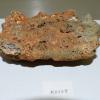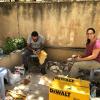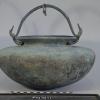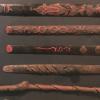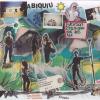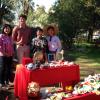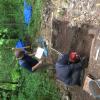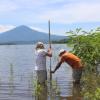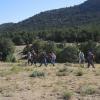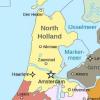Archaeometallurgy and Historical Ecology on the 5th and 6th Century Osaka Plain
Excavated sporadically for over thirty years, Ōgata in Kashiwara City and Mori in Katano City are the largest-scale Kofun Period ironworking sites in Osaka Prefecture, Japan. Large numbers of forging slags have been unearthed from both sites, which alongside partially preserved hearth features, provide the bulk of evidence for ironworking. Following methods developed by French archaeometallurgists, novel analyses of these forge slags correlate different slag materials with different forging activities.






